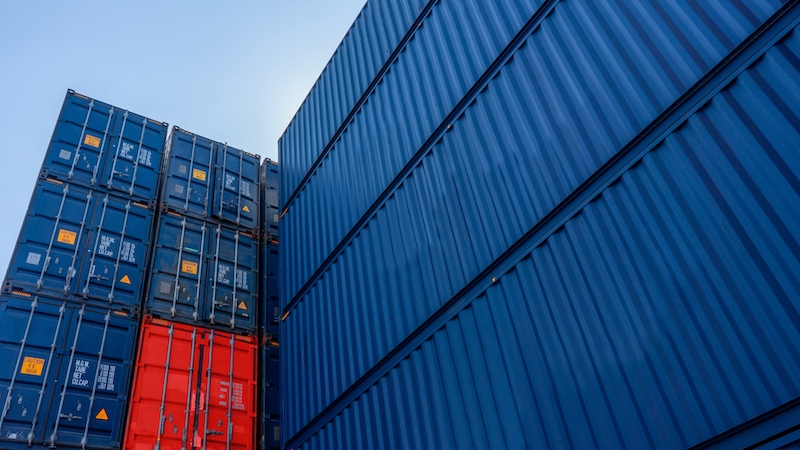If you’re in the business of shipping goods, then you need to be aware of the different types of freight shipments. There are several ways to ship freight, each with advantages and disadvantages. So if you’re looking to ship your goods, read on for information about the best way to do it!
The meaning of freight
Freight refers to transporting goods by land, air, or sea. The term is typically used to describe the movement of goods between businesses or between a business and its customers.
Freight can also refer to the actual vehicles or vessels used to transport goods, as well as the cost of shipping.
Freight is an important part of the global economy, and it plays a vital role in enabling businesses to ship goods around the world. Freight is also a major source of pollution, and it has a significant impact on the environment. As a result, freight is a complex and often controversial topic.
What is freight shipping?
Freight shipping is the transportation of large quantities of goods, typically by truck or train. This type of shipping is often used for commercial purposes, such as when a company needs to transport raw materials or finished products from one location to another.
In some cases, freight shipping can also be used for personal purposes, such as when a family moves to a new home. Freight shipping is usually more expensive than regular shipping, but it offers several benefits, such as the ability to transport larger items such as heavy machinery and the ability to ship items more securely.
Benefits of freight shipping
There are several benefits of freight shipping, including:
-The ability to ship large items: Freight shipping allows you to ship items that are too large or heavy for regular shipping. This is especially beneficial if you need to transport heavy machinery or other large items.
-The ability to ship items more securely: Freight shipping is more secure than regular shipping, and it offers a higher level of protection for your items. This is because freight shipments are typically shipped in containers that are more difficult to break into.
-The ability to ship items faster: Freight shipping is usually faster than regular shipping, and it can often be delivered on the same day or the next day. This is because freight shipments are typically shipped by truck or train, which are faster than regular shipping methods.
What’s the difference between freight and shipping?
Most people use the terms “freight” and “shipping” interchangeably, but there is a distinct difference between the two.
Freight refers to the transportation of goods by any means, including air, land, and sea, and in large quantities. Shipping, on the other hand, only refers to the transportation of goods in smaller amounts.
This distinction is important because it can affect both the cost and the time frame of your shipment.
What is an example of freight?
An example of freight is when a company ships a large order of products from one location to another. This type of shipment is typically full load and done by truck or train and can take several days to complete the journey.
Benefits of shipping Intermodal freight with RailGateway.ca
If you’re looking for a reliable, cost-effective way to ship your freight, then you should consider using RailGateway.ca. We’re the leading provider of intermodal freight shipping services in Canada, and we offer a variety of benefits, including the ability to ship large items more securely and faster.
Request your intermodal freight quote today.
Freight shipping methods
When shipping freight, there are different modes to choose from, including truckloads in full or lesser loads (LTL), intermodal and expedited routes.
Here’s a quick look at the different modes of shipping:
Full truckload (FTL)
The container will hold the inventory in its entirety, and the goods are transported.
Less-than a truckload (LTL)
LTL shipments range in weight from 150 to 15,000 pounds, and the mode of transportation (typically by truck) is decided based on the size and weight of the shipment.
Intermodal
Intermodal typically combines railroads and trucks but can include various types of transportation, including ships and aircraft. In addition to transport costs, rail will reduce fuel consumption and reduce the transport of cargo by rail.
Partial truckload (PTL)
Partial truckload shipping is a hybrid between LTL and FTL freight. It’s only an option if a shipper requires a truck with a capacity of 5,000 to 40,000 pounds or five up to 14 pallets.
Expedited
Expedient transport is often used to expedite the delivery and involves trucks and air. Out of the various modes of transport, expedited is more expensive than the standard method.
Factors that determine freight shipping rates
When it comes to shipping freight, there are a number of factors that will determine the rates you pay.
The first is the mode of transport. Shipping by air is typically the most expensive option, followed by shipping by truck and then by rail.
The second factor is the distance the shipment will travel. The further the distance, the higher the rate will be. And the third factor is the weight and volume of the shipment.
Heavier and larger loads typically cost more to ship than lighter and smaller ones but not always. Depending on packaging, lighter items may have similar volumes to those heavier but more compact shipments.
Finally, the type of goods being shipped will also affect the rates. Hazardous materials typically cost more to ship than other types of freight.
Keep these factors in mind when shipping freight so that you can budget accordingly.
How to calculate freight shipping costs?
To calculate freight shipping costs, you’ll first need to determine the mode of transport you’ll be using. Then, you’ll need to consider the distance the shipment will travel, the weight and volume of the shipment, and the type of goods being shipped.
Once you have all of this information, you can use a freight calculator to get an estimate of the shipping costs.
How to prepare a freight shipment?
When you are ready to ship your freight, there are a few things you need to do to prepare it. First, you need to make sure that the items you are shipping are properly packaged. This means using sturdy boxes or crates that can withstand the journey ahead.
You also need to make sure that your freight is properly labeled. This includes putting your name and contact information on the outside of the shipment, as well as clearly marking the contents of the shipment on the inside.
Finally, you need to choose a freight shipping company that can provide you with the best possible service. This means getting quotes from multiple companies and comparing their rates and services.
By taking these steps, you can be sure that your freight shipment will arrive safely.
For more tips on how to choose a container for shipping and how to pack it check out our posts:
10 Types of Intermodal Cargo You Can Ship in Containers
Container Bites: Interesting Intermodal Container Stats and Tid Bits
The Intermodal Container: Everything You Need to Know About Containerisation!
Container for Shipping: Your Guide to Shipping Containers from the Pros
How to ship freight?
There are a few different ways to ship freight, but the most common method is by truck. Trucking companies will typically have a fleet of trucks that are specially designed for shipping freight.
To ship by truck, you’ll need to load your freight onto the truck and then secure it in place. Once it’s loaded, the truck will transport it to its destination.
Another common method of shipping freight is by rail. Railroads have special cars that are designed for carrying freight. To ship by rail, you’ll need to load your freight onto the rail car and then secure it in place. The rail car will then transport it to its destination.
Finally, you can also ship freight by air.
Get in touch with a Fulfillment Expert Today.
If you’re ready to get started with freight shipping, the first step is to contact a fulfillment expert. They can help you determine the best shipping method for your products and help you get started with the process. Contact us today to get started.






